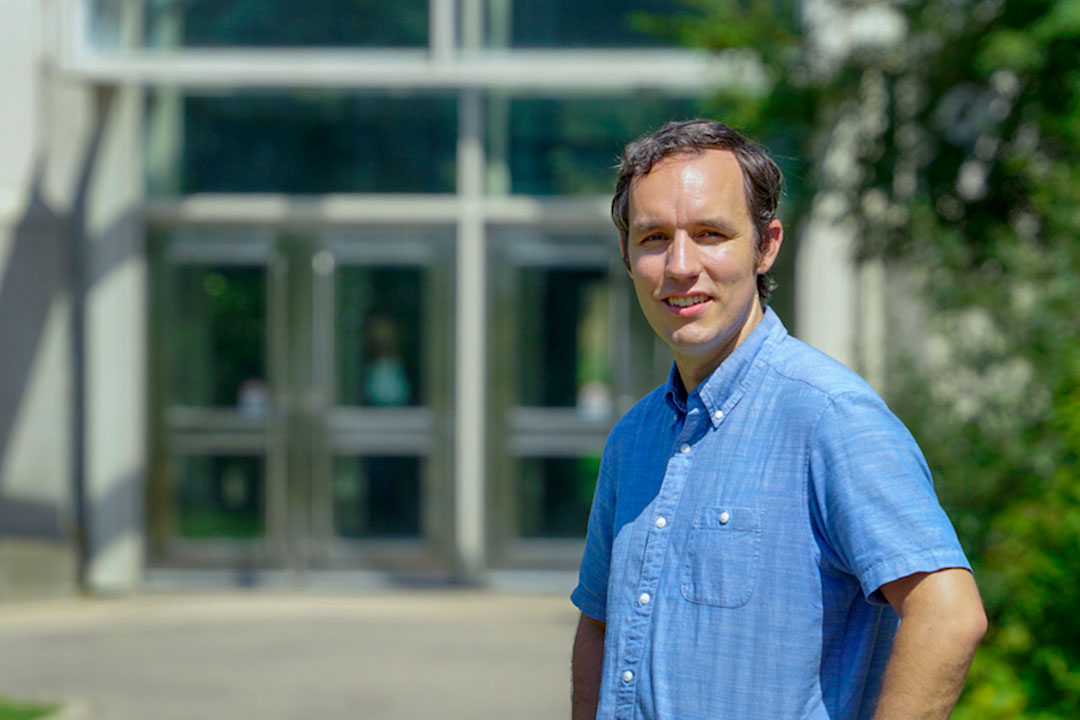
Striking a balance between the costs and benefits of wetlands
A new research project will look at how to compensate farmers for the costs of keeping wetlands on their properties.
By Jeff MelchiorThere is almost no question that wetlands provide a great deal of good to society. They help with flood control, carbon storage, ecosystem services and a host of other benefits. In fact, if you’ve drunk clean water or breathed clean air lately, you can thank wetlands for playing a role in that sometime along the line.
But there’s another side of wetlands not often reported in the media. Although everyone benefits from wetlands in some way, it’s farmers who bear the brunt of the costs of keeping them on their properties. And because not all wetlands are created equal, the private costs of retaining them can sometimes outweigh the benefits—at least from an economic perspective.
Striking a balance between the social and environmental benefits of wetlands with producers’ business costs is the focus of a research project by Dr. Patrick Lloyd-Smith (PhD), an assistant professor with the college’s Department of Agricultural and Resource Economics.
The basic idea behind the project is that there is a mismatch between who benefits and who bears the costs of wetland conservation. This suggests a role for compensation to agricultural producers. “One aspect of the research is taking the cost of wetlands to landowners seriously,” said Lloyd-Smith.
In addition to the opportunity cost of land, there are other, less tangible costs as well.
“There's a nuisance cost to having a wetland on your landscape. Farmers have to maneuver their farm equipment around them, duplicating their input costs depending on the piece of equipment. They can also be home to different kinds of wildlife which interfere with farming practices,” said Lloyd-Smith.
The costs and benefits of wetlands tend to vary across the landscape, he adds. “There are going to be some wetlands on very productive agricultural land that do not provide substantial benefits to society and keeping those wetlands may not be worth it. Of course, the reverse is true as well.”
Lloyd-Smith’s research will combine surveys of producers with economic modeling to understand the compensation required for wetland conservation. There has been a lot of research into compensation models internationally but in Canada it’s just getting off the ground. By far the simplest means of compensating landowners is to pay them a fixed fee, a method exemplified by the Alternative Land Use Services (ALUS) program. Lloyd-Smith said this program has seen a lot of successful uptake by landowners, particularly in Alberta and Manitoba.
“It's nice and simple and everybody understands the rules of the game,” he said.
“The ALUS program is interesting because they really work at a local scale—that’s one of the keys to their success. They work with watershed and producer groups—it's a really collaborative effort. I think they've had some success in getting landholders engaged in the process and thinking about stewardship on the land as well as rewarding landowners that are good stewards of the land.”
Another way of transferring payments is to run a reverse auction, said Lloyd-Smith. Rather than bid to buy a good as in a traditional auction, this model sees landowners submit bids to receive compensation for restoring a wetland on their land. These bids are based on how much they think it will cost to keep a wetland on their properties.
“One of the nice things about reverse auctions is we find out how much it costs farmers to actually restore a wetland on the landscape. Farmers—because they are the landowners—usually have the best information on that. It's also a way that we can keep the costs of the program down.”
The time and effort required to submit a bid can be an obstacle to farmers, he said. One of the challenges of reverse auctions is increasing the amount of participation.
“There was one reverse auction for wetlands that was run around Calgary over the last couple of years. There is a general sense that participation in the program was quite low. They didn't get as many landowners putting in bids as they had hoped. I think as they become more popular they will have better success with participation.”
On the flipside, Lloyd-Smith’s research will also look at the environmental and economic benefits of retaining wetlands. For this he is working with his colleagues at the University of Saskatchewan’s (USask) Global Institute for Water Security. A team of hydrologists, biologists and other scientists will trace the linkages of wetlands throughout the ecosystem to understand their impact on human well-being. Lloyd-Smith’s role will involve placing an economic value on the benefits society receives from wetlands.
“I’m primarily an economist, so on that part of the research I imagine that you wouldn't want an economist trying to figure out all those scientific linkages,” he said.
The second component of Lloyd-Smith’s research is the role of technology in farmers’ decisions to retain or decommission a wetland. “On the one hand, technology has been increasing yields, which increases the opportunity cost of having wetlands on your landscape. So in a sense technology is sort of hurting wetland conservation,” he said.
“On the other hand you have the potential for technology to reduce nuisance costs. If you have auto steering and automatic shut-off of inputs, you might be able to reduce the costs of maneuvering big equipment around wetlands. Technology plays a role in both exasperating and helping reduce the costs of wetlands on the landscape.”
Story from Agknowledge, Fall 2019.

